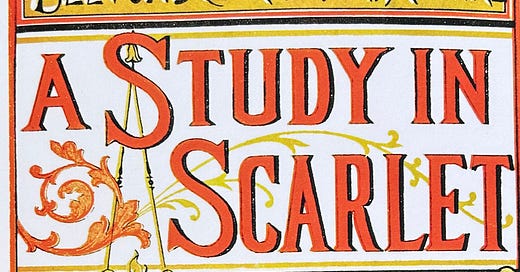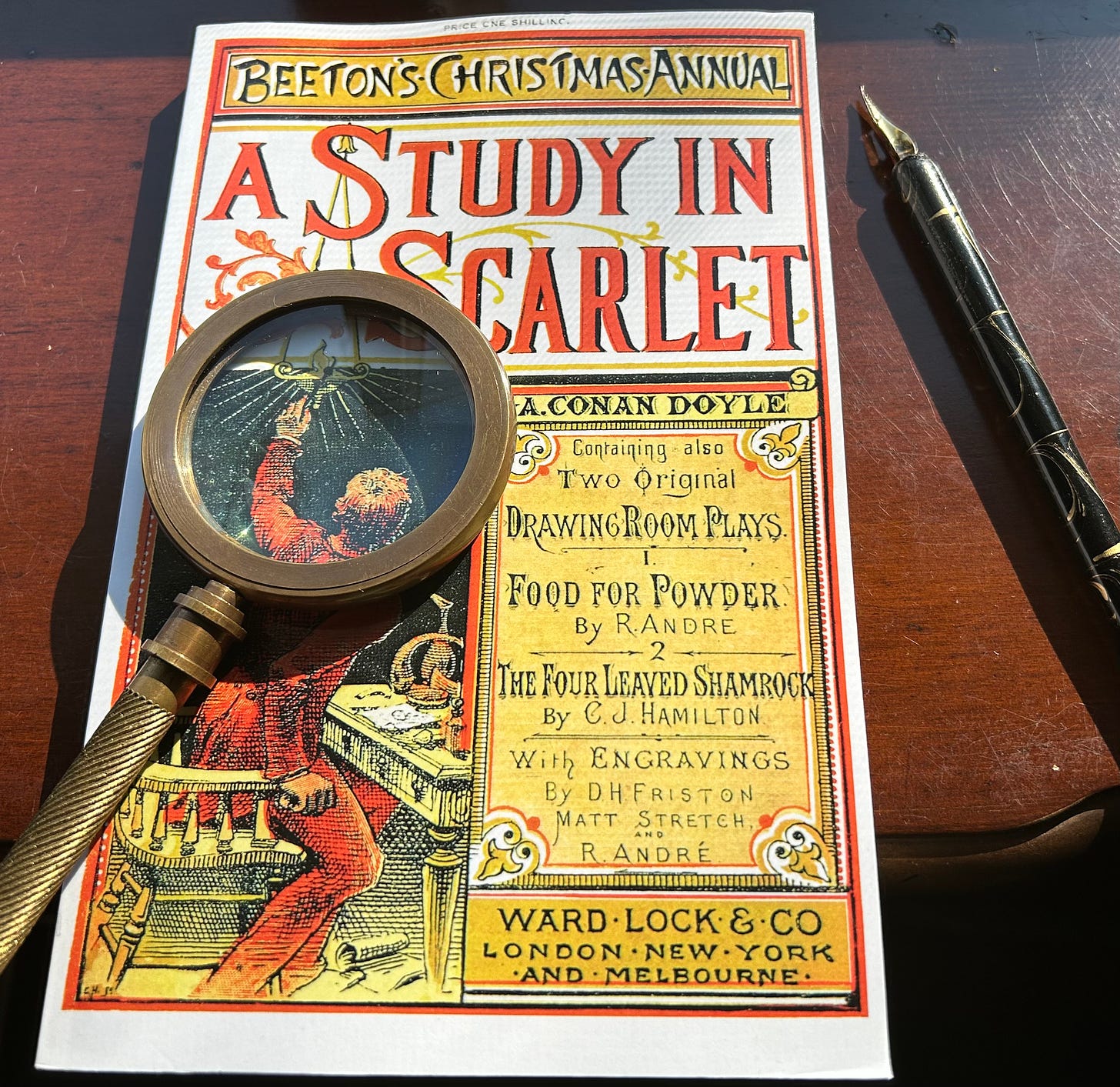In Chapter VII of Sweet Things Dying, private enquiry agent Adam Cole continues his search for the missing Heather Bloom by tracking down a hansom cab driver who may have been one of the last men to see her. This takes him to one of London’s many cabmen’s shelters, resting places for cab drivers to warm their bones over a meal and an alcohol-free beverage. These shelters also offered reading material in the way of books, newspapers, and magazines for drivers to peruse in lieu of the more raucous past-times offered at local pubs. Cole’s visit to one such shelter occurs in December 1887, around the time that a popular magazine published its annual Christmas edition. This issue of Beeton’s Christmas Annual 1887 catches his eye while he asks questions of the cabbies, but flicking through it he finds “nothing that inspired him” and tosses it back on the table where he found it without giving it a second thought.
This is meant to be a little piece of ironical humour. Really, the Christmas 1887 issue of Beeton’s provided a very big source of inspiration for the creation of Cole and the countless other fictional detectives who preceded him. For it was in this magazine that Scottish author Dr. Arthur Conan Doyle published A Study in Scarlet, a short novel that introduced the world to his own invented investigator Sherlock Holmes. Subtitled “Being a Reprint of the Reminiscences of JOHN H. WATSON, M.D., late of the army medical department,” the story brings us into the world of Holmes through the eyes of his friend and colleague Dr. Watson. Watson carries the narrative in the first person, as he would go on to do throughout almost all the three novels and 56 short stories that would follow over the next 40 years. Here, we see the two characters meet for the first time and are granted a look into the odd behaviour of Holmes through Watson’s much-alarmed sensibilities. The character of Holmes is formed rather immediately and would go on to present himself largely unchanged from this point onward. This is far from a negative criticism, as the character, especially in 1887, was so fresh and unusual and thrilling in his depiction, that any deviation from his typical display of deductive prowess, superhuman intellect, and emotionless logical faculties, would have disappointed readers who wanted more of the same again and again.
Keep reading with a 7-day free trial
Subscribe to The Case-Book of Adam Cole to keep reading this post and get 7 days of free access to the full post archives.




